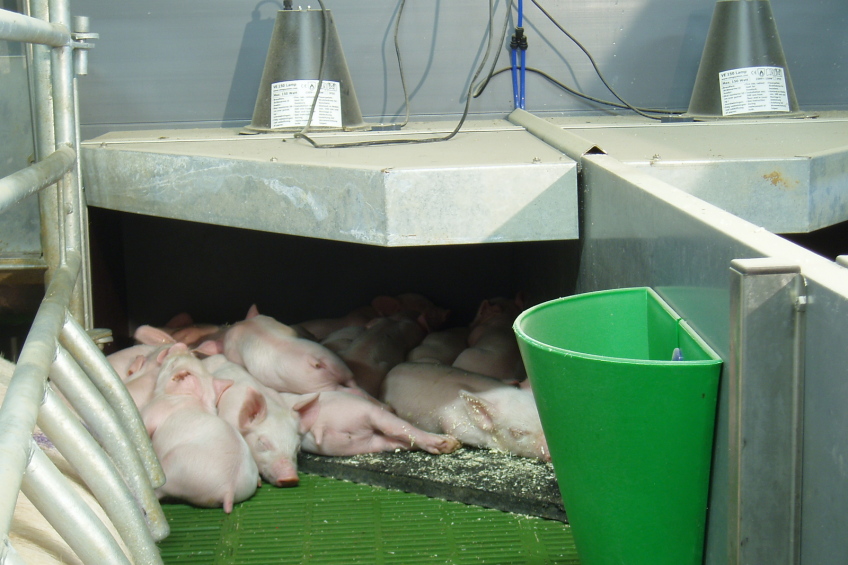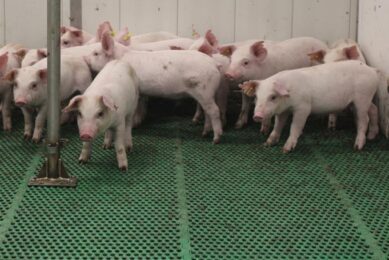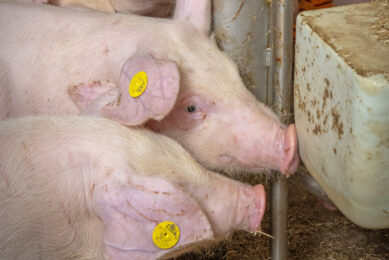Best practices in Denmark’s swine breeding units

There are major changes ahead in the area of breeding and farrowing as the demand for larger litters and more efficiency grows. Where better to search for the latest ?developments than at the home of large litters – Denmark… Several researchers explain.
By Roger Abbott
A mix of prosperity, legislation, welfare groups, environmentalists and a high pig density have made Denmark a country that is ahead of the game when it comes to innovations and trends in pig farming. For that reason it pays to take a look at current Danish developments to discover what is soon likely to be topical on an international scale.
A lot of recent debate has focused on changes during breeding. Especially in the farrowing room, the Danish are testing various novelties. At the ‘Svinekongres’, the annual conference of the Danish Pig Research Centre (VSP) held in October 2013, some of the latest developments were discussed. VSP scientist Lisbeth Brogaard Petersen spoke about new equipment that should make life easier for producers and of new systems that are needed to improve conditions for sows and for workers as well.
“We are already looking at new farrowing systems to allow producers to handle large litters in a different way to what is currently considered to be best practice,” she said, after having delivered a lecture called Best practice in farrowing units.
She continued, “We are currently doing trials in which we let sows look after 20 piglets instead of 14, in different types of pen, with split feeding times or different ‘sittings’ for the piglets and using excess milk when necessary. These trials are on-going and we are hoping to get the final results next year, but so far we seem to be having more success in keeping piglets from larger litters alive this way,” said Petersen, who has been working at the VSP for the last 20 years.
She said, “Things really are getting much more technical in the farrowing unit and I am currently testing so-called ‘multi-intelligent heating systems’ that can measure and control the temperature in creep areas to see how efficient they are and whether they are cost-effective or not.”
“The theory is that they should be more efficient and help farmers save on labour as well as energy costs, because they regulate the amount of heat they emit, according to the piglets’ needs. This means workers don’t have to check on the piglets as often. But we have to ensure that these systems are reliable and that they work for the piglets and for the producers,” she explained.
Petersen and her team started testing some of these ‘intelligent canopies’, developed by VengSystem, in June 2013. The team is hoping to be able to publish the initial results early next year.
Petersen said, “We are also conducting trials on new automatic surveillance systems that incorporate 3D cameras which are placed over the farrowing pens to keep a constant eye on the piglets, which again should help reduce the number of times people have to go into the unit to check on the animals, especially at night. It sounds like a great ‘labour-saving’ device, but again we feel we need to ensure that these systems are good for the piglets, reliable, as easy to use as the makers claim and whether they are truly cost-effective for producers.”
Hands-on surveillance
In the meantime, one of Petersen’s fellow scientists at the VSP, Flemming Thorup, urged delegates at the Herning conference to ensure they continued to maintain a close hands-on surveillance system over the sows and piglets in the farrowing unit.
Thorup, who qualified as a veterinary surgeon before moving into research, stressed that handlers working in the farrowing unit should pay particular attention to hygiene, especially with regard to the use of gloves.
“People really must pay attention to the glove issue,” he said. “The gloves must always be stored in a clean, dry place and after you put on gloves, you are only allowed to touch the internal part of the sow.
“If you touch anything else, even if it is just brushing against your own clothes, you must take the gloves off and put clean new ones on before touching any internal parts of the pig to remove the risk of any cross-infections. This is really important.”
Both Thorup and Petersen also spent some time during their joint presentation at the conference explaining to the delegates how they should prepare the farrowing units before sows arrive. “Pens should be washed, dried and heated and made ready with nesting material and a soft mat for the sow to go in at least three days before farrowing is due,” they said.
The nesting material is needed to satisfy the sow’s natural instincts, while the soft mat would help reduce shoulder lesions. Trials showed that providing about 100g of straw a day led to easier and quicker farrowing, with less need for obstetric assistance.
“Staff should also keep a close eye on the temperature.
The floor in the creep area should be heated to between 34-35°C, with the inspection aisle behind the sow at between 40°C and 42°C, while the inspection aisle next to the sow should be between 47°-50°C.”
Thorup added that sows should have easy access to water. Each sow needs between 25 and 50 litres of water a day and workers should check that the water nipples are clean and able to provide at least 4 litres a minute.
Petersen said, “A healthy sow will take care of her own piglets, but it is vital that workers are also on hand keeping an eye on the farrowing to help in case of any difficulties, with every visit and action carefully recorded to ensure everything is done and others know what has been done. It is important that people who have been told to check on the piglets take action as soon as they notice something – even if it is more than they have been told to do – and then to immediately record their actions.”
She added, “This is another key point for workers in the farrowing unit – keep records stored in a systematic way, so everybody knows what they need to do and can see what has been done by somebody else in an instant, if that person is off-duty or sick and the sows or piglets need assistance or special care. Systematic surveillance, for instance, is more important than the number of hours spent watching the animals.”
It is also important to check the piglets for diarrhoea, navel infection, arthritis or general weakness every day, as well as ensuring they had the correct heating, with nurse sows provided for the smallest piglets to give them a better chance of survival.”
In conclusion, Petersen found that greater effort was required at first by staff in the farrowing unit to ensure that more piglets were weaned at a higher weight and needed less attention later on.
PP
Developments in the gestation unit
Not only the farrowing unit is seeing new methods – Danish pig researchers are also taking a closer look at the gestation unit, where sows spend most of their time and need to thrive to ensure consistent returns for producers.
It is important to prepare this unit before the sows are introduced into it, with strategically placed straw and low walls, so the animals immediately know where the lying areas and excretion areas are, Hanne Rasmussen, a senior project manager at the Danish Pig Research Centre, told delegates.
In a joint presentation on Best practice in the gestation unit with VSP chief scientist Lisbeth Hansen, Rasmussen said it was also important to teach young gilts some social skills before they were introduced into the gestation unit to prevent fighting.
This could be done by allowing them to mix with some mated sows for two or three days beforehand, she said. “When we did this, we noticed that there was much less aggression in the gestation units and all the animals were happier. It also made things easier for the employees looking after the animals.
It also helped increase the number of gilts that got through to have second and third litters, which helps provide good returns on the extra time and effort spent on helping the gilts acclimatise to the larger groups beforehand.”
Rasmussen also advised producers to allow the gilts to establish their own hierarchy in a small group, so they could get to know each other before they were introduced into the gestation unit.
The unit should be laid out so that it had good ‘escape possibilities’, as well as ‘hide-outs’ for the pigs in the event of any fights.
During the presentation, Hansen described a new design feature that was being incorporated into best practice for gestation units on Danish pig farms, following successful trial at the VSP. She said, “We have found that the provision of more low lying walls (between 40-60 cm high) leads to less mess in the lying areas and also encourages the pigs to get up and move to the dunging areas, especially if producers lay straw down for bedding, as well as rooting in these lying areas. These low walls also made it easier for staff to check the animals regularly – and they need to look at and feel each sow every day to ensure they are maintaining good body condition, keeping accurate daily records.” Hansen pointed out that it was also important for somebody to scrape out the dunging area regularly to remove the risk of pigs slipping and injuring their legs. She said, “Don’t leave the pen before you check each sow every day – and make it easier for yourself and the pig by having the hospital pen inside the gestation pen, so it does not have too far to go if it is sick, or injured.”
The hospital pen should have a soft bedding (a soft mattress) that is loping, so that there is always a dry lying area for the sick pigs.
Hansen concluded that it is important to take as much care of the pigs as possible in the gestation unit to ensure that as many sows and gilts as possible made it to the farrowing unit and had as many piglets as possible. PP











